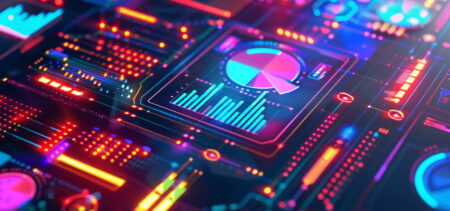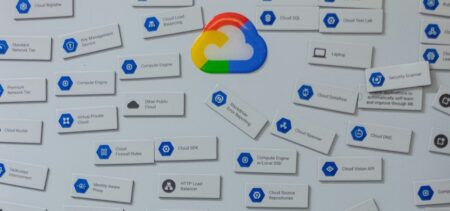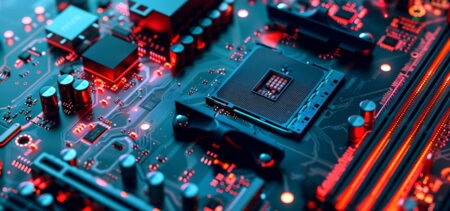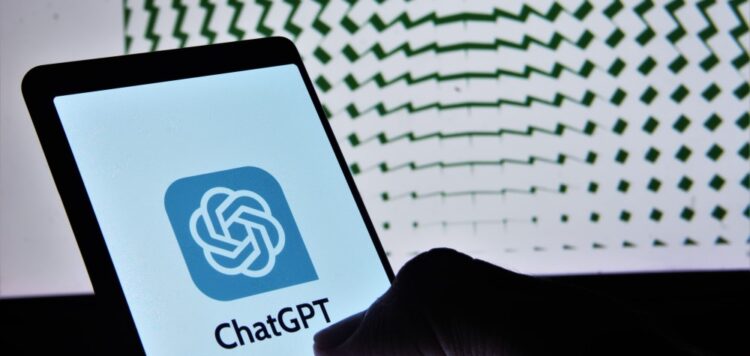Over the years, AI has played a pivotal role in augmenting and transforming various aspects of the world as we know it. At the forefront of this technological revolution stands generative AI (Gen AI), an embodiment of innovation that serves as a prime example of machine learning’s transformative potential. Put simply, Gen AI is a piece of machine learning tech that produces an array of content, including copy, images, and data. As of 2023, the global market size for Gen AI holds at a whopping $13.71 billion dollars, underscoring the enormity of its capabilities.
With its remarkable ability to create new content and perform tasks that were once reserved for human creativity, this advanced piece of tech has rapidly integrated itself into everyday life. In this article, we’ll explore the opportunities and challenges Gen AI brings to the table. We’ll also delve into how businesses can use this technology to not only stay current, but also scale their organization to a whole new level.
Concerns and Potential Disruption
The emergence of Gen AI has not been without its concerns. In a recent paper published by Goldman Sachs, the spotlight was cast on the potential risk of job displacement due to Gen AI. This report highlights that tools fueled by machine learning and large language models (LLMs) could potentially jeopardize the equivalent of an astonishing 300 million full-time jobs. Despite the prevailing uncertainty surrounding this particular piece of tech’s potential impact, the paper acknowledges its ability to generate content indistinguishable from human-created output and break down communication barriers between humans and machines.
Humans Roles in Gen AI and Its Importance
In light of these concerns, it is imperative to recognize the irreplaceable role humans play in shaping, implementation, and oversight. The notion that Gen AI might lead to mass job loss is only part of the story. Rather than dwelling solely on potential negative outcomes, it’s crucial to acknowledge the vast opportunities that Gen AI offers to tech professionals. In a landscape that is perpetually evolving and innovating, tech professionals have the chance to not only adapt, but also thrive in the face of this transformation.
The Evolving Job Landscape
As Gen AI continues its journey of advancement, the inevitable transformation of certain job roles comes into focus. Rather than adopting a resistant stance, individuals within the tech sector should consider embracing the technology, delving into how it can amplify, expedite, and enhance their work. A recent survey revealed that a staggering 86% of people have already begun integrating Gen AI into various facets of their daily lives. Moreover, a substantial 73% of respondents found that Gen AI has facilitated task accomplishment at their workplaces.
Gen AI’s Impact on Businesses
With the increase in Gen AI use cases, its impact on work organization and distribution between humans and AI becomes evident. For instance, while large language models can generate content, their limitations mandate human intervention to ensure that they are trained with accurate datasets.
Finding the Balance
As an ongoing validation process, human employees create additional prompts to refine the output of Gen AI. Prompts can range from commands and code snippets to natural language sentences, depending on the task at hand. This dynamic underscores the reality that while certain components of work can be expedited, the need for human expertise and input remains irreplaceable. Rather than being a replacement, Gen AI acts as an enabler, allowing employees to engage with their work differently, fostering higher speed, improved quality, and enhanced efficiency on a broader scale.
New Job Opportunities Presented By Gen AI
The advent of Gen AI not only brings forth challenges but also unveils exciting opportunities within the tech industry. A notable prediction by the World Economic Forum estimated that advanced machine learning would generate a staggering 97 million new roles. As companies increasingly integrate Gen AI into their products and services, the demand for professionals skilled in AI development and maintenance is set to surge.
Predictions for Future Roles
The role of data detectives or scientists will rise in prominence as they navigate and uncover insights from vast datasets. Equally crucial will be the presence of prompt engineers, instrumental in crafting effective instructions for AI systems. Robotics engineers and machine managers may also play a pivotal part in overseeing and optimizing AI-powered systems.
Moreover, proficiency in key programming languages such as Python, integral for AI development, will most likely become highly valued. Professionals possessing expertise in modeling, computational intelligence, machine learning, mathematics, psychology, linguistics, and neuroscience could find themselves in high demand. These specialized skills will prove pivotal in creating and refining AI models while upholding their accuracy and effectiveness.
Ensuring Gen AI’s Accuracy and Reliability
Evidently, the demand for expertise within the AI community extends beyond theoretical domains. Real-world applications of AI, such as reviewing the accuracy of outputs related to various fields, including medicine, mathematics, and history, highlight the practical relevance of AI’s potential. In this pursuit, embracing diversity and representation within teams becomes essential, as it allows brands to mitigate biases in their Gen AI initiatives. A diverse team captures the nuanced complexities of data and language, essential for ensuring accuracy and reliability.
Strategies for Success
The road to success in the face of Gen AI’s disruptive potential begins with proactive preparation. Continuous learning and upskilling stand as the cornerstones for thriving in a dynamic environment. By cultivating new knowledge and honing specialized skills that align with Gen AI, tech professionals position themselves for growth. This encompasses expertise in AI model development, data analysis, pre-processing, and algorithm design.
Mastering the Evolution: Training Both Generative AI and Employees
Considering the fast-paced advancement of machine learning, two parallel narratives unfold — the meticulous training of Gen AI and the concurrent empowerment of employees to harness its potential. Teaching creative machines and nurturing human proficiency results in a harmonious coexistence where technology and human capacity meld to redefine innovation.
Nurturing Creative Machines
The journey to harness the potential of Gen AI begins with the intricate process of training these advanced machines with ample sets of data. Gen AI’s capabilities to mimic human creativity and problem-solving are not innate; they are the result of meticulous teaching. Through vast datasets and complex algorithms, AI models are exposed to a spectrum of human-generated content.
This exposure molds the AI’s understanding of language nuances, artistic styles, and decision-making patterns. Iterative processes refine the model’s responses, enhancing its ability to generate content that is remarkably human-like. The training journey is a fusion of data science, programming, and AI psychology, akin to cultivating an artificial form of artistic expression.
Empowering Employees
Just as Gen AI undergoes training, so do the employees tasked with wielding this cutting-edge technology. Empowering workforces involves imparting a comprehensive understanding of Gen AI’s capabilities and intricacies. Workshops, training modules, and hands-on experiences become crucial components.
Through these induction processes, employees learn how to effectively integrate Gen AI into their tasks, leveraging its potential to amplify their productivity. Mastery extends beyond technicalities, delving into ethical considerations, understanding AI’s limitations, and fostering creative collaboration between humans and machines. This education transforms professionals from mere users to skilled navigators of the Gen AI landscape.
Harmonious Coexistence: Humans and Gen AI as Collaborators
The training of Gen AI and the empowerment of employees lead to a harmonious coexistence — a collaborative intelligence where the strengths of each entity augment the other. Gen AI refines its human-like abilities while simultaneously staying grounded by human intervention, ensuring ethical outputs and eliminating biases.
This symbiotic partnership enables employees to tap into AI’s efficiency, generating ideas, content, and solutions at an unprecedented pace. Yet, the human touch remains indispensable — adding the artistic finesse, emotional intelligence, and ethical oversight that only humans can provide. The result is a dynamic ecosystem where Gen AI’s ingenuity complements human creativity, leading to successful outcomes achieved much more efficiently than before.
Ethics and Evolution: Pioneering Responsible Advancement
Amid this evolution, ethics remain a guiding beacon. Ensuring Gen AI’s training data is unbiased and diverse, and empowering employees to discern when AI’s assistance is beneficial or inappropriate, is paramount. Responsible AI usage demands ongoing education, as the intersection of technology and humanity necessitates constant alignment. As Gen AI evolves, so does the framework of ethical considerations, guiding its role in enhancing human lives without compromising values.
Final Thoughts
The Gen AI revolution is underway, transforming industries and prompting the evolution of job roles. While apprehensions exist, the future is ripe with opportunities for professionals who embrace adaptability, continuous learning, and collaboration between humans and machines. As the tech landscape continues to evolve, Gen AI represents a turning point that invites innovation, redefines roles, and augments human potential in unprecedented ways.













































